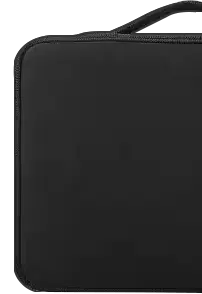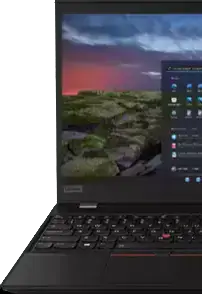what is User State Migration Tool (USMT)?
The User State Migration Tool (USMT) is a command-line tool included in the Windows Assessment and Deployment Kit (ADK) that helps IT professionals migrate user data and settings during large-scale Windows deployments. It allows for the capture and migration of user accounts, files, operating system settings, and application settings to a new Windows installation, whether it's for PC replacement or refresh scenarios.
What are the benefits of using a USMT?
You would use it to move user profiles, files, and system preferences from one computer to another without manually copying everything. It saves time during upgrades, deployments, or device replacements by automating the transfer of data and application settings, ensuring a seamless user experience on the new system without having to reconfigure software or reestablish personal preferences manually.
How could I migrate user data between computers efficiently using USMT?
You could use this USMT to automate the migration process, capturing user files, desktop configurations, and application settings, and then applying them to a new computer. This avoids manual transfers and minimizes user disruption. It supports large-scale migrations, making it suitable for IT deployments, while also reducing human error by using command-line instructions and XML configuration files for accuracy.
What is the advantage of creating a custom migration script?
You would create a custom script to control which files, folders, and application settings get moved during migration. This is useful when you only want specific user data or need to exclude unnecessary files, ensuring your transfers are faster and use less storage. It also allows you to standardize migrations across multiple devices, so every system is configured consistently with only the necessary data.
Can I use User State Migration Tool (USMT) for multiple user accounts?
Yes, you can use it to migrate data for multiple accounts simultaneously, which is especially useful for organizations. By running the migration commands with multi-user support, you can capture and transfer profiles, settings, and files for each account, streamlining device upgrades or replacements without requiring users to manually back up their information individually.
Does USMT work with domain user profiles?
Yes, it can capture and restore data for domain-based user profiles, including documents, desktop settings, and network configurations. This ensures that employees in corporate environments keep their work environment consistent when moving to a new device, without needing IT to manually reconfigure settings like mapped drives or network printers.
How does USMT prevent data loss?
It prevents data loss by systematically collecting user data, documents, and configurations before a computer replacement or upgrade, storing them securely, and then applying them to the target device. Unlike manual copies, it doesn't miss hidden directories, application settings, or registry configurations that users often forget, ensuring a complete transfer of all critical information during the migration process.
How does this USMT handle network-based transfers?
It can transfer data over a network by storing captured user files and settings on a shared server, then applying them to target machines. This avoids using portable drives and speeds up the migration for organizations handling many devices. It supports command-line instructions for specifying network paths, making it easy to standardize large-scale migrations.
Will I lose installed programs during migration?
You wouldn't lose user files or preferences, but the tool doesn't move entire programs. Instead, it transfers the related application settings and configurations so that after reinstalling programs on the new system, users can keep their personalized setups. This approach reduces compatibility problems that could arise from directly moving software binaries.
Why should I use USMT instead of manual backups?
You should use USMT because manual backups often miss system preferences, registry data, or hidden application configurations. This tool captures all user-specific elements automatically and restores them to a new computer, saving you time and ensuring a consistent experience. It also reduces errors by following scripted instructions rather than relying on memory or manual selection.
Can I exclude specific folders in USMT during migration?
Yes, you can exclude specific folders by defining rules in XML configuration files. This gives you precise control over what gets transferred, helping you avoid unnecessary data like temporary files, large downloads, or outdated archives. Excluding these items can make the migration faster and reduce storage requirements on the new computer.
How can I speed up repeated migrations in USMT?
You could speed them up by saving XML configuration templates and reusing your scripts for each migration. This eliminates the need to recreate settings for every device. By automating the process with predefined rules, you ensure each transfer is consistent, faster, and requires less manual intervention, even when migrating dozens or hundreds of computers.
Why do IT teams rely on USMT for deployments?
They rely on USMT because it reduces manual labor, ensures consistent configurations, and speeds up the process of moving user data during new device rollouts. IT teams can script the entire process, making it repeatable and scalable. This minimizes user downtime and support tickets, which saves organizations both time and money during hardware refresh cycles.
Does USMT handle different versions of operating systems?
Yes, it can migrate user profiles, files, and settings between supported operating system versions, even if the old and new devices use different releases. This makes upgrading easier by ensuring users don't lose their environment or need to manually configure everything after the OS change, as long as the migration rules are properly configured.
Will I need extra storage during migration?
Yes, you will need extra storage because the tool first captures user data and settings into a compressed store file before transferring it. This storage can be on a network share, external drive, or another partition. Having enough space ensures all data, including hidden files and configurations, can be safely preserved before it is restored to the target computer.
Can I also migrate browser settings with?
Yes, you can migrate browser favorites, bookmarks, and settings using USMT configuration rules. While it doesn't move the actual browser program, it can capture the personalized environment so that users get the same browsing experience on the new computer without manually exporting and importing bookmarks or reapplying preferences.
How can I secure user data during migration?
You can secure it by encrypting the captured data store and transferring it over secure network paths. The tool supports encrypted storage to prevent unauthorized access. IT teams can also apply permissions so only administrators can restore the data, ensuring sensitive files and settings remain protected during every step of the migration process.
Will USMT work for offline migrations?
Yes, it can work offline by capturing the user data onto a portable drive and then restoring it to a new computer without requiring a network connection. This method is useful for field workers or situations where network transfers aren't possible, ensuring data can still be securely moved between devices.
Can I roll back a migration in USMT if needed?
Yes, you can roll back by restoring the original data store to the previous system if something goes wrong during migration. The tool's storage files act as backups, allowing you to reverse the process, which can save time and prevent data loss if the new system encounters compatibility or stability problems.
Do I need to reinstall programs after migration in USMT?
Yes, you would still need to reinstall programs because the tool doesn't move software binaries. However, it transfers the user settings, preferences, and registry configurations for those programs, so after reinstallation, users can work as they did before without reconfiguring everything from scratch.













